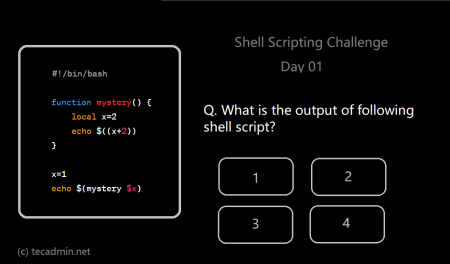Bash (Bourne-Again SHell) is a popular Unix shell scripting language that provides numerous features for text manipulation, file management, and process control. One of the powerful features in Bash is command substitution, which allows users to capture the output of a command and use it as an input for another command or as a variable. In this article, we’ll dive deep into understanding the command substitution using $() in Bash, its uses, and best practices.
Table of Contents
- What is Command Substitution?
- Syntax for Command Substitution
- Practical Examples of Command Substitution
- Command Substitution with Pipes and Redirection
- Best Practices for Using Command Substitution
- Command Substitution vs. Process Substitution
- Conclusion
1. What is Command Substitution?
Command substitution is a feature in Bash that allows you to execute a command and use its output as an argument or variable value. This is particularly useful when you need to capture the result of a command and pass it to another command or store it in a variable for later use.
2. Syntax for Command Substitution
There are two common ways to perform command substitution in Bash:
- Using $(): This is the preferred and modern way of performing command substitution.1output=$(command)
- Using backticks
``: This is an older, less recommended method, but still works in many scripts.1output=`command`
Both methods achieve the same result, but using $() is considered more readable and less error-prone.
3. Practical Examples of Command Substitution
Here are some practical examples to illustrate the use of command substitution in Bash:
- Saving the result of a command to a variable:12current_date=$(date)echo "Today is $current_date"
- Using command substitution in an if statement:12345if [[ $(whoami) == "root" ]]; thenecho "You are the root user."elseecho "You are not the root user."fi
- Counting the number of lines in a file:12number_of_lines=$(wc -l < /path/to/your/file)echo "The file has $number_of_lines lines."
4. Command Substitution with Pipes and Redirection
Command substitution can also be used in combination with pipes and redirection operators to manipulate the output of commands:
- Using a pipe with command substitution:12file_owner=$(ls -l /path/to/your/file | awk '{print $3}')echo "The file is owned by $file_owner"
- Redirecting the output of a command substitution:1$(command > output.txt)
5. Best Practices for Using Command Substitution
- Always use $() instead of backticks for better readability and to avoid potential issues with nested command substitutions.
- Quote your command substitutions when assigning them to variables or using them in commands to avoid word splitting and globbing issues.
- Keep the commands inside the command substitution simple and modular for easier debugging and maintenance.
6. Command Substitution vs. Process Substitution
While command substitution is used to capture the output of a command, process substitution is a related concept that allows you to treat the output of a command as a file. Process substitution uses the syntax <(command) or >(command). This can be useful when working with commands that expect file inputs, but you want to provide the output of another command instead.
Conclusion
Command substitution is a powerful feature in Bash that allows you to capture the output of a command and use it as input for another command or as a variable. By understanding how to use command substitution with the $() syntax, you can streamline your scripts, increase readability, and reduce the number of temporary files needed for your operations. Remember to follow best practices and be mindful of the differences between command substitution and process substitution. With these concepts in your toolkit, you’re well on your way to mastering Bash and creating efficient, powerful shell scripts.



